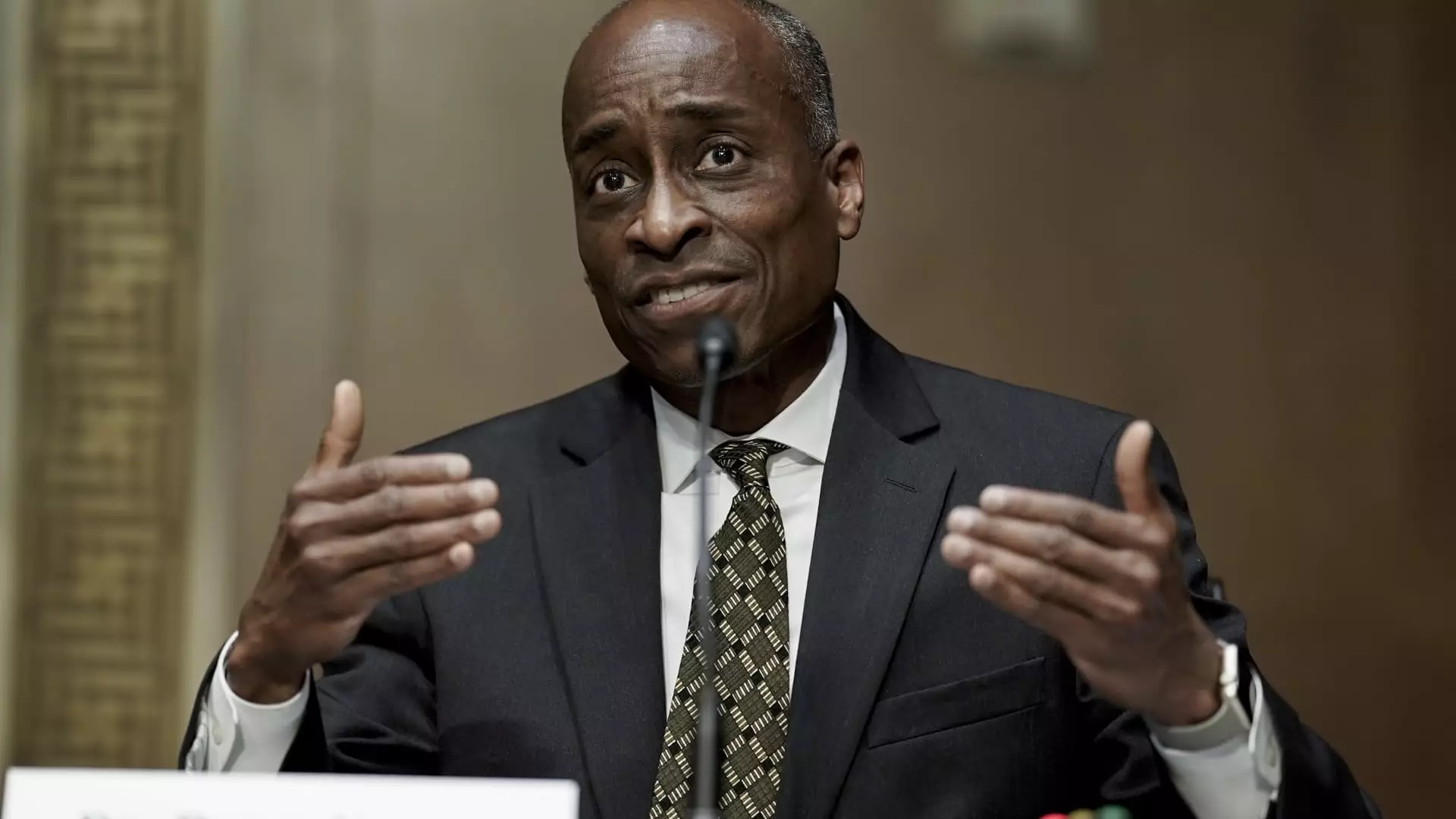In recent remarks, Federal Reserve Vice Chair Philip Jefferson highlighted the need for prudence in adjusting interest rates amidst a backdrop of economic uncertainty. Jefferson’s statements reflect a careful balancing act that the Fed must perform in response to the evolving landscape of the American economy, underscoring the dual challenges of maintaining economic stability while managing inflationary pressures. His insights suggest that while the economy demonstrates resilience, the Federal Open Market Committee (FOMC) must tread lightly in its approach to policy changes.
Jefferson characterized the current economic climate as relatively robust, with inflation gradually receding along a “bumpy” path towards the Fed’s target goal of 2%. He expressed confidence in the labor market, noting it remains in a “solid position.” However, this optimism is tempered by recognition of the complexities facing policymakers. Jefferson stressed the importance of a measured approach in any potential further adjustments to interest rates, advocating a strategic, data-driven evaluation of the current economic conditions.
The Vice Chair suggested that policies should shift towards a more neutral stance without rushing to alter existing measures. In his view, the most probable scenario involves a gradual loosening of monetary policy constraints over the medium term. This perspective indicates a deliberate slow-play strategy—one that avoids abrupt changes which could destabilize the economy. Jefferson indicated a preference for sustaining the current policy for a longer duration, particularly as inflation figures show promise but remain above the target.
His recent comments followed the FOMC’s decision to maintain policy rates within the 4.25% to 4.5% range after several earlier cuts. These adjustments were taken to counter an earlier wave of inflation, highlighting the Fed’s fluctuating strategy in the face of economic realities. Jefferson’s alignment with the committee’s decision to hold rates steady underscores a collective acknowledgment of the uncertainty that permeates economic forecasting.
Moreover, concerns over external factors complicate the domestic economic outlook. Tariff negotiations between the United States and its primary trading partners loom large, particularly amid ongoing tensions with China, despite temporary alleviation regarding duties on imports from Canada and Mexico. Jefferson’s remarks pointed to this uncertainty as a key variable in the economic landscape; shifting government policies can have wide-ranging implications that are difficult to predict.
He aptly noted the inherent unpredictability associated with economic forecasts, especially when external relations and trade agreements are in flux. The interplay between domestic growth rates and international policy dynamics suggests the Fed must remain vigilant and adaptable to new challenges, ensuring that monetary policy does not react hastily to potential instabilities.
Jefferson also elaborated on the current state of inflation, specifically referencing the personal consumption expenditures price index, which has shown a declining trend over the past year. While the most recent figures indicate a 2.6% increase year-over-year—far from the Fed’s target but a significant drop from previous highs—it is essential to approach these numbers with caution.
He emphasized a high level of uncertainty surrounding projections, acknowledging that while it is reasonable to expect a continued decline in inflation, numerous factors could alter this trajectory. Jefferson articulated the possibility of varied future policy routes, depending on how inflation dynamics and labor market conditions evolve. The Fed may need to maintain higher interest rates for an extended period if inflation persists, or conversely, consider easing policies if the labor market shows signs of weakness.
Vice Chair Philip Jefferson’s insights convey a thoughtful approach to monetary policy during an unprecedented and unpredictable economic juncture. The interplay between economic strength, labor market dynamics, and external trade pressures creates a complex environment for the Federal Reserve. Jefferson advocates for a cautious, measured response, championing flexibility and responsiveness as cornerstones of effective policy-making. As the economy continues to navigate these unpredictable waters, the Fed’s ability to balance restraint with necessary action will be crucial in steering towards a more stable and flourishing economic future.


Leave a Reply